Attention, bird enthusiasts and feathered-friends aficionados! Prepare to embark on a delightful journey through the diverse avian wonders of the Great White North.
Today, we delve into the enchanting world of the types of birds in Ontario, Canada, boasting over 500 species.
From vibrant warblers to majestic raptors, this article will unveil the captivating array of feathered beauties that call this province home.
So, why wait? Let’s spread our wings and dive into this delightful avian adventure!
Table of Contents
Key Takeaways
- Ontario is home to over 500 different bird species, including raptors, waterbirds, songbirds, woodpeckers, owls, waterfowl, sparrows, gulls, and hummingbirds.
- Raptors in Ontario face challenges such as habitat loss, pollution, and climate change, and conservation efforts focus on protecting nesting sites and promoting habitat restoration.
- Waterbirds in Ontario undertake long-distance migrations to access food sources and avoid harsh weather, and threats to them include habitat loss, pollution, and climate change.
- Woodpeckers found in Ontario play a crucial role in controlling insect populations and creating nesting opportunities for other birds, and the conservation efforts focus on protecting habitats and raising public awareness.
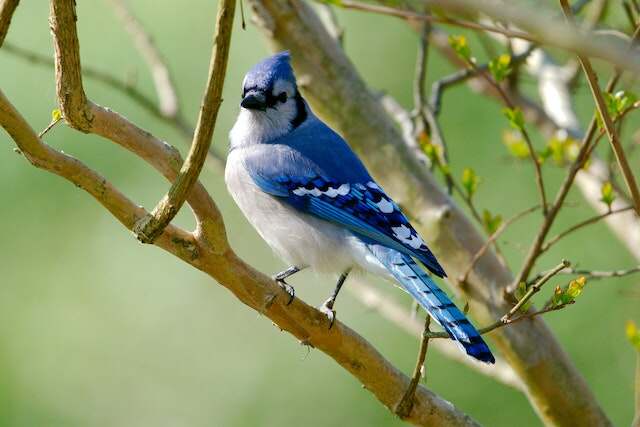
Types of Birds in Ontario, Canada
Ontario, Canada is a haven for birdwatchers with over 500 species. From iconic loons and elegant herons to colorful warblers and powerful raptors, the province offers a diverse range of avian treasures.
Raptors
What are the different species of raptors found in Ontario, Canada?
Raptors, or birds of prey, are a diverse group of birds that play a crucial role in maintaining ecological balance.
Ontario is home to a variety of raptors, including the red-tailed hawk, bald eagle, peregrine falcon, and osprey, among others.
Raptors in Ontario face numerous challenges, such as habitat loss, pollution, and climate change.
Raptor conservation efforts in the province focus on protecting nesting sites, promoting habitat restoration, and reducing human disturbances.
Raptors have also adapted to urban areas, with species like the red-tailed hawk and peregrine falcon successfully establishing nests on tall buildings.
These urban populations offer unique opportunities for studying raptor behavior and promoting public awareness about their conservation needs.
Transitioning to the subsequent section about waterbirds, Ontario’s diverse avian population also includes a rich variety of waterbirds.

Waterbirds
Waterbirds, which inhabit various bodies of water in Ontario, exhibit a diverse range of species and adaptations. These birds have developed unique characteristics that allow them to thrive in their aquatic habitats.
One notable aspect of waterbirds is their migration patterns. Many waterbirds in Ontario undertake long-distance migrations, traveling to warmer regions during the winter months.
This behavior is essential for their survival, as it allows them to access abundant food sources and avoid harsh weather conditions.
However, these migration patterns can be disrupted by various threats, including habitat loss, pollution, and climate change.
These factors can negatively impact waterbird populations by reducing the availability of suitable nesting and feeding sites.
To ensure the conservation of these remarkable creatures, it is crucial to address these threats and protect the habitats they depend on.
Moving on to the next section, songbirds also play a significant role in Ontario’s avian diversity.
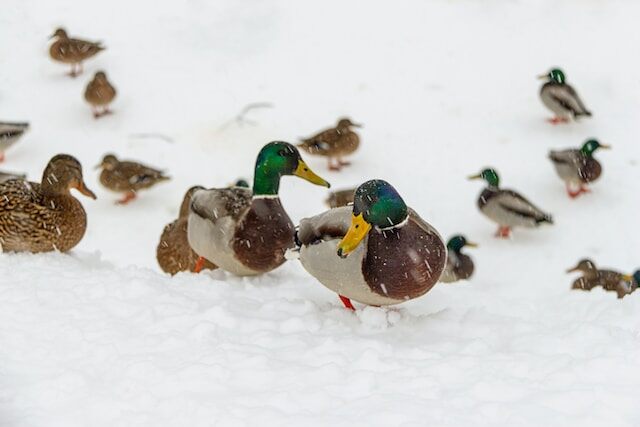
Songbirds
This paragraph discusses three types of songbirds found in Ontario, Canada: the American Robin, Northern Cardinal, and Yellow Warbler.
The American Robin (Turdus migratorius) is a medium-sized songbird known for its distinctive orange breast and melodious song.
The Northern Cardinal (Cardinalis cardinalis) is a vibrant red bird with a prominent crest and a strong, clear whistle.
The Yellow Warbler (Setophaga petechia) is a small songbird that can be identified by its bright yellow plumage and sweet, musical trill.
American Robin
The American Robin, a common bird species in Ontario, Canada, is known for its distinctive orange breast and melodic song.
This species is primarily found in open woodlands, forests, and suburban areas where there are ample food sources such as earthworms, insects, and berries.
American Robins are migratory birds, and their patterns vary depending on their location. In Ontario, they typically arrive in early spring to breed and raise their young.
During this time, they build cup-shaped nests made of grass and mud in trees, shrubs, or man-made structures.
After breeding season, they form flocks and migrate to warmer regions in the southern United States and Mexico.
Overall, the American Robin is an adaptable species with specific habitat and feeding preferences, as well as a unique migratory and breeding behavior.
Transitioning to the subsequent section, the Northern Cardinal.
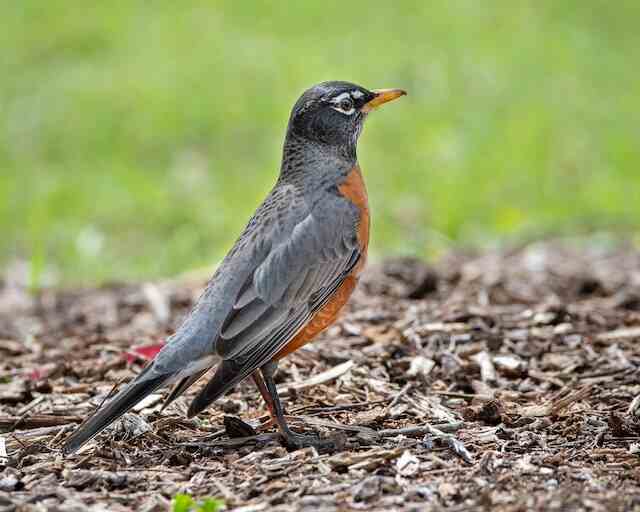
Northern Cardinal
With its vibrant red plumage contrasting against the snowy backdrop, the Northern Cardinal adds a splash of color to the winter landscape of Ontario, Canada.
This iconic bird, scientifically known as Cardinalis cardinalis, can be found in a variety of habitats, including woodlands, gardens, and shrublands.
The Northern Cardinal is a year-round resident of Ontario and is known for its distinctive crest, bright red feathers, and black mask around its eyes.
In terms of behavior, the Northern Cardinal is highly territorial and will defend its nesting area vigorously against intruders. It is primarily a seed-eater, but also consumes fruits and insects.
Males are known for their melodious songs, which they use to establish and defend their territories.
With its striking appearance and melodious calls, the Northern Cardinal is a beloved bird species in Ontario.
Moving on to the next topic, the yellow warbler…
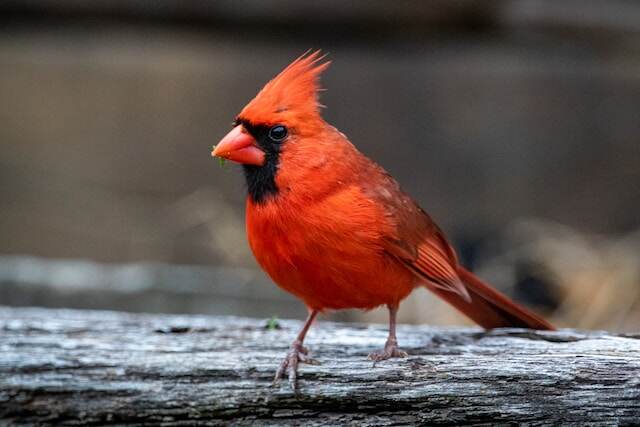
Yellow Warbler
The Northern Cardinal, which is known for its vibrant red plumage, is a common sight in Ontario, Canada.
Now, let’s shift our focus to another fascinating bird species found in this region: the Yellow Warbler. This small songbird is known for its bright yellow color, which makes it easy to spot among the trees.
The Yellow Warbler is migratory, with populations in Ontario typically breeding in the northern parts of the province and migrating to Central and South America during the winter.
During the breeding season, the male Yellow Warbler sings a sweet, melodic song to attract a mate and establish territory.
They build their nests in shrubs or low tree branches, using a variety of materials including grass, bark, and spider silk.
The female lays 3–5 eggs and incubates them for about 11 days. The young leave the nest around 10 days after hatching.
Now, let’s explore another fascinating bird species: woodpeckers.
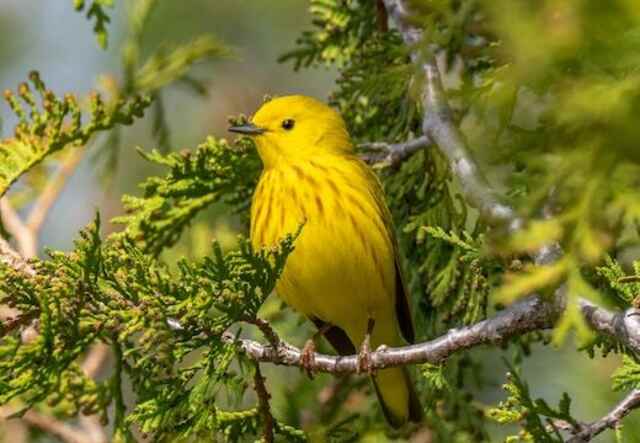
Woodpeckers
This paragraph will discuss the Downy Woodpecker, Pileated Woodpecker, and Northern Flicker, which are woodpecker species found in Ontario, Canada.
The Downy Woodpecker (Picoides pubescens) is a small woodpecker with a black and white plumage and a distinctive white patch on its back.
The Pileated Woodpecker (Dryocopus pileatus) is a larger woodpecker characterized by its striking black body, red crest, and loud, resonant drumming sounds.
Lastly, the Northern Flicker (Colaptes auratus) is a medium-sized woodpecker with a brown body, black bib, and a white rump patch that is visible during flight.
Downy Woodpecker
Downy Woodpecker is a small and agile bird found in Ontario, Canada, characterized by its black and white plumage and distinctive red patch on the back of its head. This bird is commonly found in deciduous forests, woodlands, and suburban areas.
The downy woodpecker’s habitat preference includes trees with soft wood, such as aspens and willows, where it excavates cavities for nesting and foraging.
Its diet mainly consists of insects, larvae, and spiders, which it obtains by using its strong bill to drum and probe into tree bark.
This species is known for its ability to cling to tree trunks and branches while foraging and its acrobatic flight patterns.
Transitioning to the subsequent section about the ‘pileated woodpecker,’ this larger species also inhabits Ontario.
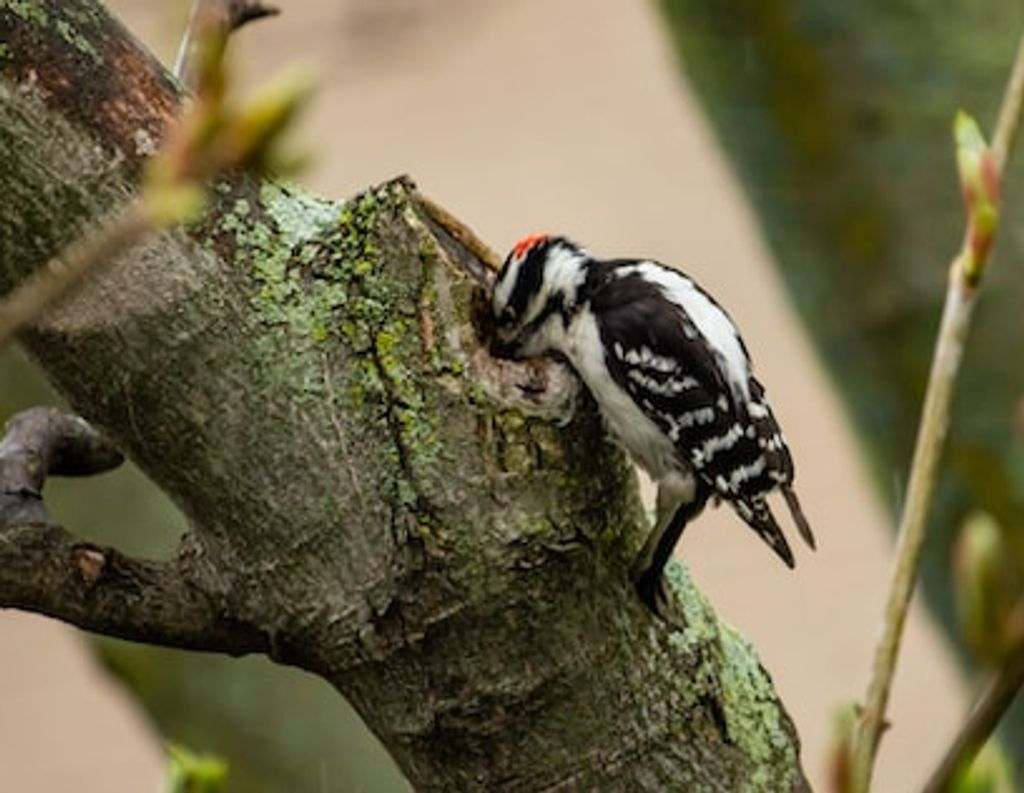
Pileated Woodpecker
Characterized by its large size and striking red crest, the pileated woodpecker is a captivating bird that captivates viewers with its powerful drilling and resonating drumming sounds.
This species of woodpecker is known for its unique nesting habits, as it excavates large cavities in dead trees for its nests.
The diet of the pileated woodpecker consists mainly of insects, such as carpenter ants and wood-boring beetles, which it locates by drumming on trees and listening for vibrations.
Despite its size, the pileated woodpecker is not considered a threat to other woodpecker species, as it tends to occupy different habitats and have different foraging strategies.
However, its impact on forest ecosystems can be significant, as it helps control insect populations and creates nesting opportunities for other cavity-nesting birds.
The pileated woodpecker is currently listed as a species of least concern in terms of conservation status.
Transitioning into the subsequent section, the next bird of interest is the northern flicker.
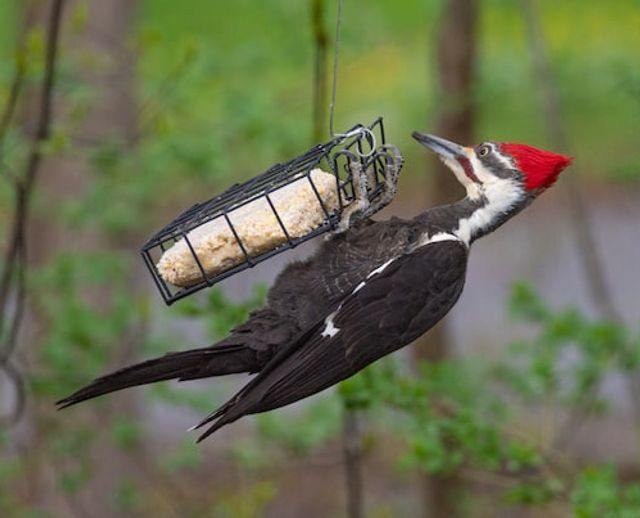
Northern Flicker
The Northern flicker, a woodpecker species commonly found in North America, showcases a unique feature with its striking black crescent on its chest, which adds intrigue and beauty to its appearance.
This bird species is known for its migratory patterns, with populations in Ontario, Canada, migrating to the southern United States during the winter months.
The northern flicker exhibits interesting nesting habits, as it often excavates nest holes in dead trees or even in man-made structures such as utility poles. These nests are typically lined with wood chips and feathers.
The northern flicker is an adaptable species, able to thrive in a variety of habitats including forests, woodlands, and urban areas.
With its impressive plumage and fascinating behaviors, the northern flicker is a captivating bird that contributes to the rich avian diversity of Ontario.
Moving on to the next section, shorebirds…

Shorebirds
Shorebirds, a diverse group of avian species found in Ontario, Canada, exhibit intriguing ecological adaptations and remarkable migratory patterns.
These birds are characterized by long legs, slender bills, and the ability to forage in aquatic environments.
Shorebird migration patterns are fascinating, with many species traveling thousands of kilometers each year between their breeding grounds in the Arctic and their wintering areas in South America.
This long-distance migration is driven by the search for suitable feeding and breeding habitats.
Habitat conservation for shorebirds is crucial to ensure their survival, as many of these birds rely on specific coastal and wetland habitats for nesting and foraging.
Conservation efforts aim to protect these habitats from human disturbances and other threats such as climate change and habitat loss.
Next, we will explore the unique characteristics of owls in Ontario, Canada.
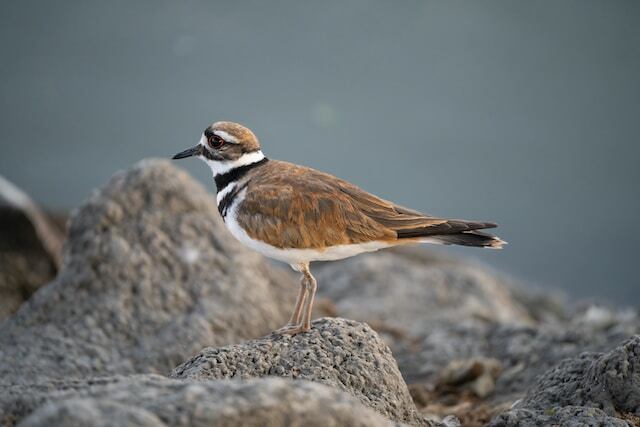
Owls
The Great Horned Owl (Bubo virginianus) is a large owl species found in Ontario, Canada. It is known for its distinctive ear tufts and large yellow eyes.
The Eastern Screech Owl (Megascops asio) is a small owl species that can be found in various habitats across Ontario. It is known for its ability to blend in with its surroundings due to its color variations.
The Barred Owl (Strix varia) is a medium-sized owl species commonly found in the forests of Ontario. It is known for its distinct hooting call and dark eyes.
Great Horned Owl
Adapting to a wide range of habitats, the Great Horned Owl can be found throughout Ontario, Canada. This majestic bird is highly adaptable and can thrive in various ecosystems, including forests, grasslands, and even urban areas.
The Great Horned Owl is known for its large size, with a wingspan up to 5 feet and weighing up to 4 pounds. It has distinct features, such as prominent ear tufts and piercing yellow eyes.
As a nocturnal predator, the Great Horned Owl primarily feeds on small mammals like rabbits, mice, and squirrels. However, its diet is not limited to mammals, as it also preys on birds, reptiles, and even large insects.
With its impressive hunting skills and ability to blend into its surroundings, the Great Horned Owl is a formidable predator in Ontario’s diverse ecosystem.
Transitioning to the next subtopic, the Eastern Screech Owl, we explore another fascinating owl species of Ontario.

Eastern Screech Owl
The great horned owl, a nocturnal bird of prey, was previously discussed.
Now, we will shift our focus to the Eastern screech owl, another fascinating species found in Ontario, Canada.
The Eastern screech owl is a small owl, measuring around 8 inches in length, with a wingspan of about 20 inches.
This owl species is known for its remarkable ability to camouflage itself, blending into tree trunks and branches with its mottled gray or reddish-brown plumage.
The Eastern screech owl primarily inhabits forests, woodlands, and suburban areas with mature trees, where it can find suitable nesting sites and prey, such as insects, small mammals, and birds.
Conservation efforts for this species include maintaining and protecting its habitat, as well as raising awareness about the importance of preserving natural areas with suitable nesting sites.
Transitioning to the next section, let’s now explore the characteristics of the barred owl.
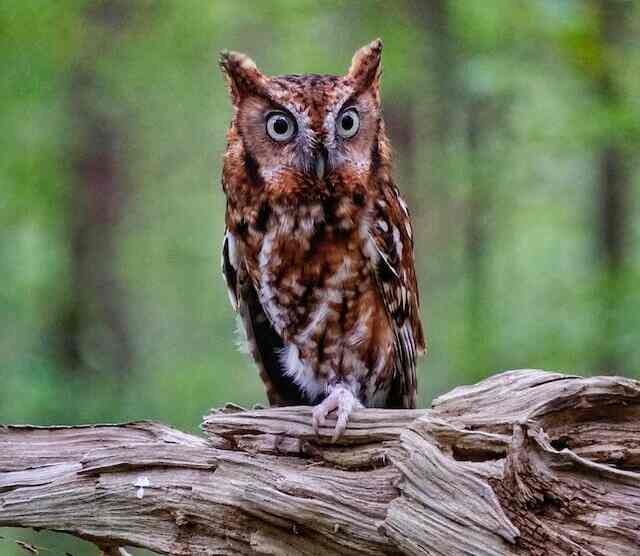
Barred Owl
With a distinctive hooting call and a preference for dense forests, the barred owl is a species that exhibits remarkable adaptability to various environments.
This medium-sized owl can be found throughout Ontario, Canada, and has a wide range of habitats that it can inhabit.
The barred owl is commonly found in mixed deciduous and coniferous forests, as well as swamps and marshes. It is known to nest in tree cavities, often taking over abandoned nests of other large birds.
The diet of the barred owl consists mainly of small mammals, such as mice, voles, and rabbits. However, it is also known to consume birds, reptiles, amphibians, and invertebrates.
This owl is equipped with excellent hearing and night vision, allowing it to hunt effectively in low light conditions.
In the subsequent section about waterfowl, we will explore another group of birds that can be found in Ontario, Canada.

Waterfowl
Waterfowl are a diverse group of birds commonly found in Ontario, Canada. Among the notable species in this region are the Mallard, Canada Goose, and Wood Duck.
The Mallard (Anas platyrhynchos) is a common dabbling duck known for its bright green head and yellow bill.
The Canada Goose (Branta canadensis) is a large waterfowl species with a distinctive black head and neck, and a honking call.
Lastly, the Wood Duck (Aix sponsa) is a medium-sized duck with a unique combination of colors, including a crested head and a striking plumage pattern.
These waterfowl species play an important ecological role in the wetland ecosystems of Ontario.
Mallard
Mallards, those fine and fashionable feathered creatures, are a common sight in the province of Ontario, Canada. They are known for their vibrant green heads, yellow bills, and brown bodies.
Breeding primarily takes place between April and July, with mallards forming monogamous pairs for the duration of the breeding season.
During migration, mallards travel long distances, with some individuals flying as far as 2,000 miles. They follow well-established flyways and utilize wetlands, lakes, and rivers as stopover sites.
Mallards play a crucial role in Ontario’s wetland ecosystems. They help control insect populations, disperse plant seeds, and provide a food source for other animals.
Their presence contributes to the overall biodiversity and health of these habitats.
Moving on to the next waterfowl species, the Canada goose, these graceful birds can often be observed in Ontario’s parks and waterways.
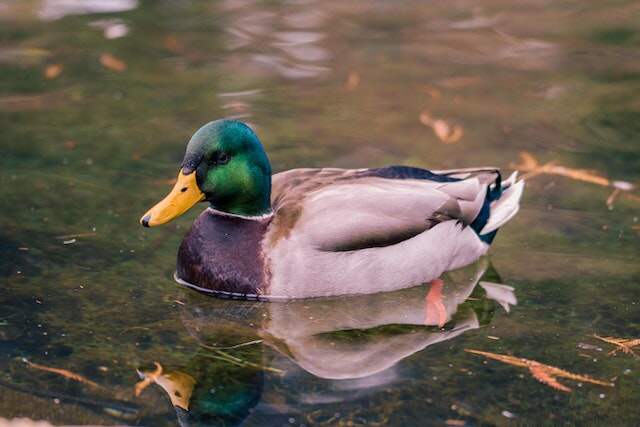
Canada Goose
The Mallard, previously discussed, is just one of the many bird species found in Ontario, Canada. Another notable species is the Canada Goose.
The Canada Goose is a migratory bird that is known for its distinctive black head and neck, white chinstrap, and brown body.
These birds have a remarkable migration pattern, traveling long distances between their breeding grounds in the northern parts of Canada and their wintering grounds in the southern United States.
This migration allows them to take advantage of different food sources and breeding opportunities.
However, the increasing population of Canada Geese in recent years has had a significant impact on local ecosystems.
Their grazing habits can result in overgrazing and the destruction of vegetation, leading to habitat degradation for other species.
Furthermore, their feces can contribute to water pollution and the spread of diseases. Transitioning to the next section, let’s explore the Wood Duck, another fascinating bird species in Ontario.
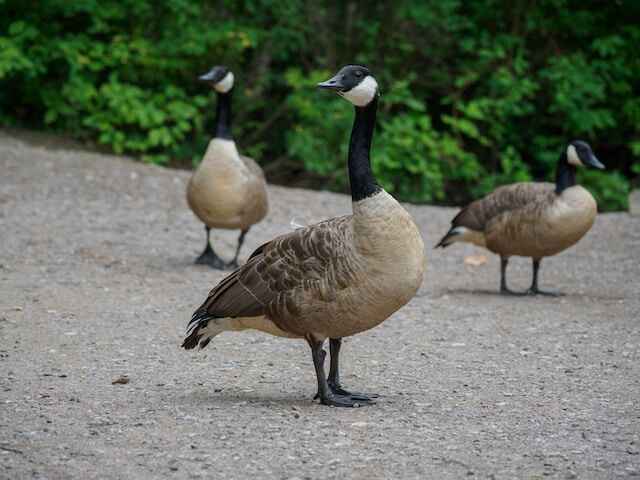
Wood Duck
One captivating avian species found in Ontario is the Wood Duck, renowned for its vibrant plumage and strikingly beautiful patterns.
The Wood Duck, scientifically known as Aix sponsa, is a medium-sized waterfowl that can be found in freshwater habitats such as marshes, swamps, and wooded ponds.
Conservation efforts have been crucial in maintaining the population of Wood Ducks in Ontario.
These efforts include the creation and preservation of suitable habitats, such as nesting boxes and wetland restoration projects.
Wood Ducks are known for their preference for nesting in tree cavities, making them susceptible to habitat loss and degradation. Therefore, providing suitable nesting sites is crucial to their survival.
Additionally, Wood Ducks feed on a variety of aquatic plants, seeds, and insects, making wetland conservation efforts vital to their food sources.
As we move on to the next section about sparrows, it is important to note the significance of preserving diverse habitats for the survival of various bird species.
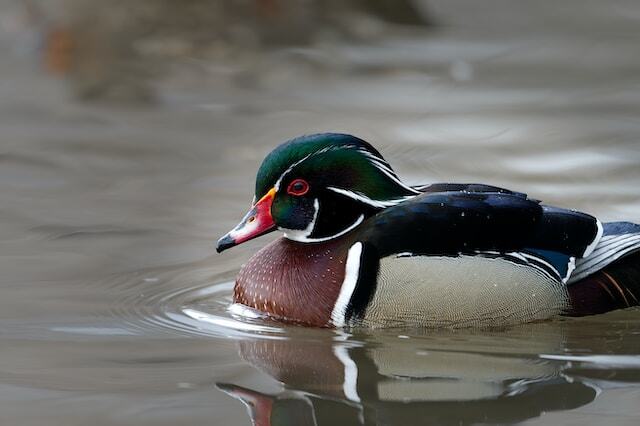
Sparrows
Sparrows, with their small size and distinctive chirping, can be commonly spotted in various habitats across Ontario, Canada.
These small passerine birds are known for their migratory behavior, with many species of sparrows traveling long distances during the changing seasons.
Sparrow migration in Ontario typically occurs during the spring and fall, as sparrows move to and from their breeding grounds.
Conservation efforts have been made to protect sparrows and their habitats in Ontario, as these birds play an important role in maintaining biodiversity and ecological balance.
Initiatives such as creating protected areas and implementing habitat restoration projects have helped in safeguarding the populations of sparrows.
Understanding the migratory patterns and conservation needs of sparrows is crucial for the long-term survival of these birds.
Transitioning to the subsequent section, gulls also inhabit the diverse landscapes of Ontario.
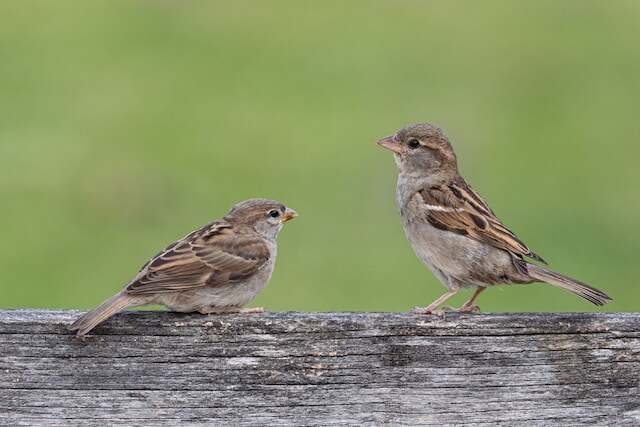
Gulls
Gulls, a diverse group of seabirds, are a common sight in Ontario, Canada. Known for their adaptability and scavenging behavior, gulls play a crucial role in the ecosystem.
Gull migration patterns are influenced by various factors, including food availability and breeding cycles.
Some gull species, such as the Bonaparte’s Gull and the Ring-billed Gull, migrate to Ontario during the spring and summer months to breed and raise their young.
Conservation efforts for gulls in Ontario focus on protecting their nesting sites and managing human-gull interactions.
These efforts aim to minimize disturbance to nesting colonies and reduce conflicts in areas where gulls come into contact with humans.
Understanding the behavior and ecological needs of gulls is essential for effective conservation strategies.
Transitioning to the next section, game birds, we will explore the diverse bird species that are hunted for sport and consumption in Ontario.
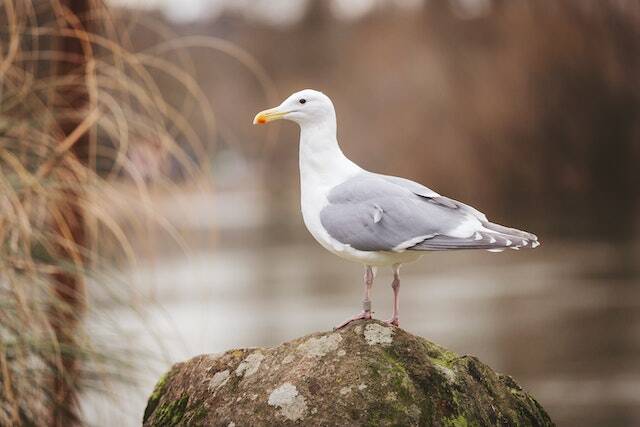
Game Birds
Game birds, known for their popularity among hunters and culinary enthusiasts, are an intriguing group of avian species that thrive in the diverse ecosystems of Ontario.
Ontario’s hunting regulations provide guidelines for the sustainable harvest of game birds, ensuring their populations remain stable.
The province is home to several game bird species, including the Ruffed Grouse, Wild Turkey, and Ring-necked Pheasant.
These species have adapted to the varying habitats found in Ontario, from deciduous forests to agricultural landscapes.
Conservation efforts are in place to protect and enhance game bird populations, ensuring their long-term survival.
These efforts include habitat management, predator control, and monitoring population trends.
By implementing these measures, Ontario aims to maintain a healthy balance between game bird populations and their environment.
Transitioning to the next section about hummingbirds, these small and vibrant birds possess unique characteristics that set them apart from other avian species.
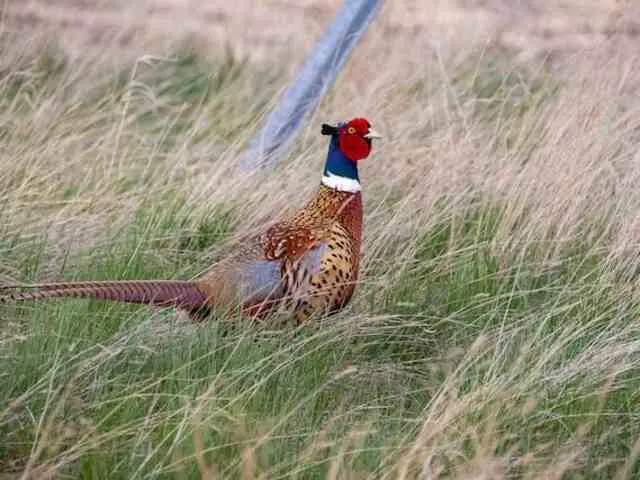
Hummingbirds
Intriguing for their vibrant colors and unique flight patterns, hummingbirds captivate observers with their swift movements and delicate beauty. These tiny birds are known for their exceptional migration patterns, which can span thousands of miles.
During the summer months in Ontario, Canada, hummingbirds can be found in abundance, as they migrate from their wintering grounds in Central and South America.
To attract hummingbirds to your garden, it is important to provide a suitable habitat that includes a variety of nectar-rich flowers and feeders.
Hummingbirds are particularly attracted to red and orange flowers, as these colors signal a high nectar content.
Additionally, providing a water source, such as a shallow birdbath or misting system, can also help attract these enchanting creatures.
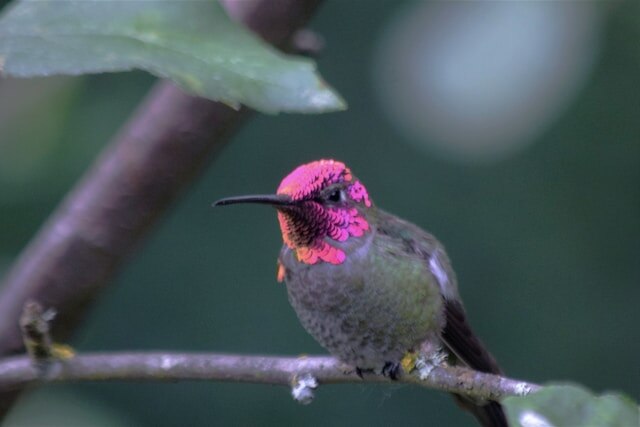
Frequently Asked Questions
What is the average lifespan of a raptor in Ontario?
The average lifespan of a raptor in Ontario is approximately 10-15 years. Factors affecting raptor lifespan include predation, habitat loss, and human activities. Understanding these factors is crucial for conservation efforts.
How do waterbirds adapt to Ontario’s changing seasons?
Waterbird migration patterns in Ontario are influenced by the changing seasons. Climate change poses a threat to waterbird populations, as it alters the availability of suitable habitats and food sources. This impacts their breeding, foraging, and overall survival.
What is the most common songbird species found in Ontario?
The most common songbird species found in Ontario is the American Robin (Turdus migratorius). It has an average lifespan of 2-3 years and primarily feeds on earthworms, insects, fruits, and berries.
How do woodpeckers communicate with each other?
Woodpeckers communicate with each other through a variety of vocalizations and behaviors. They use drumming, tapping, and calls to establish territories, attract mates, and communicate warnings. Their vocalizations vary in pitch and volume, enabling effective communication within their species.
Are there any endangered shorebird species in Ontario?
Endangered shorebird conservation efforts in Ontario focus on mitigating the impact of climate change on shorebird populations. Climate change poses a threat to their habitats and food sources, leading to population decline. Conservation measures aim to protect and restore critical habitats and raise awareness about the importance of preserving these species.
Conclusion
In Ontario, Canada, a variety of bird species can be found, including raptors, waterbirds, songbirds, woodpeckers, shorebirds, sparrows, gulls, game birds, and hummingbirds.
These birds play important roles in the ecosystem and contribute to the biodiversity of the region.
By studying the different types of birds in Ontario, researchers can gain a deeper understanding of their behavior, habitat preferences, and migration patterns.
This knowledge is crucial for conservation efforts and ensuring the long-term survival of these avian species.


